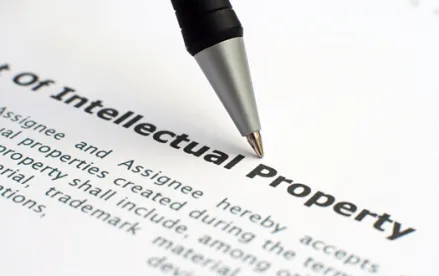The US Court of Appeals for the Federal Circuit found a method of treatment claims pertaining to topical formulations to be obvious, applying the presumption of obviousness of overlapping ranges theory. Almirall, LLC v. Amneal Pharmaceuticals LLC & Amneal Pharmaceuticals of New York, LLC, Case No. 020-2331 (Fed. Cir. Mar. 14, 2022) (Lourie, Chen, Cunningham, JJ.)
Almirall’s patent generally claims methods of treating acne or rosacea with formulations containing certain concentrations or concentration ranges of dapsone and acryloyldimethyl taurate (a type of thickening agent known as A/SA). The claims also contain a negative claim limitation of “wherein the topical composition does not comprise adapalene.”
In a final written decision, the Patent Trial & Appeal Board (Board) relied on three main references in its finding that the challenged claims would have been obvious. One reference (Garrett) disclosed dapsone formulations with a different type of thickening agent (Carbopol®). Garrett did not disclose any formulations that contained adapalene. Another reference (Nadau-Fourcade) described formulations containing exemplary types of thickeners, including both Carbopol® and A/SA agents. The last reference (Bonacucina) disclosed dispersions containing sodium acryloyldimethyl taurate that can be used for topical administration. All three references disclosed formulations with thickening agents within the claimed ranges.
The Board applied a presumption of obviousness based on the overlapping ranges of the thickening agents and ultimately concluded that it would have been obvious to a person of ordinary skill in the art (POISTA) to substitute the A/SA agents taught in either Nadau-Fourcade or Bonacucina for the Carbopol® agent disclosed in Garrett. The Board found that the claimed range of thickening agents overlapped with Garrett, Nadau-Fourcade and Bonacucina. The Board also relied on an expert presented by Amneal who testified that a POSITA would have appreciated that the different gelling agents are interchangeable to find a reasonable expectation of success in terms of a rationale for combing the prior art.
Almirall appealed, contending that the Board erred in presuming obviousness based on the overlapping ranges found in the prior art references. Almirall argued that the presumption of obviousness only applies when a single reference discloses all the claimed ranges, whereas the Board relied on different references to create the presumption (Garrett with either Nadau-Fourcade or Bonacucina). Citing the evidence showing the interchangeability of the two different types of thickeners, the Federal Circuit found that the Board did not err in applying the presumption, citing to its 2018 case of E.I. du Pont de Nemours & Co. v. Synvina: “[t]he point of our overlapping range cases is that, in the absence of evidence indicating that there is something special or critical about the claimed range, an overlap suffices to show that the claimed range was disclosed in—and therefore obvious in light of—the prior art.” The Court also noted that this case did not turn on the presumption, since the combination of prior art was simply involved the substitution of one known thickening agent for another as there was no evidence to challenge the substitutability.
The Federal Circuit also rejected Almirall’s argument that the Board failed to account for the negative adapalene claim limitation. Almirall argued that although the formulations in Garrett did not contain adapalene, more is needed for prior art to meet the requirement of a negative disclosure of a claim element. The Court, citing its 2019 decision in AC Techs. v. Amazon.com, found the argument to be contrary to precedent: “[A] reference need not state a feature’s absence in order to disclose a negative limitation.” Since it was undisputed that Garrett disclosed dapsone formulations that lacked adapalene, the Court found that was sufficient.
The Federal Circuit also rejected Almirall’s argument that the prior art did not suggest that a POSITA would have had a reasonable expectation of success to substitute one thickening agent for another, citing the 2007 Supreme Court decision in KSR v. Teleflex, and reiterating that a reasonable expectation does not require absolute predictability: “[W]hen a patent claims a structure already known in the prior art that is altered by the mere substitution of one element for another known in the field, the combination must do more than yield a predictable result.”




 />i
/>i

